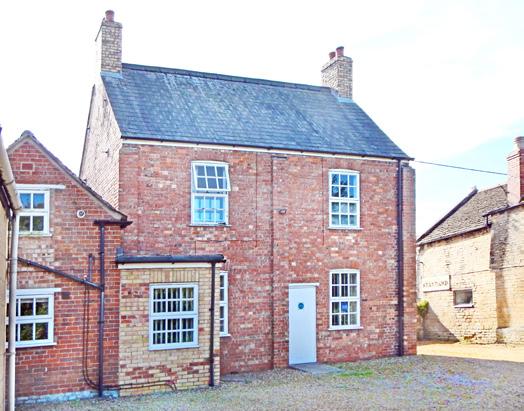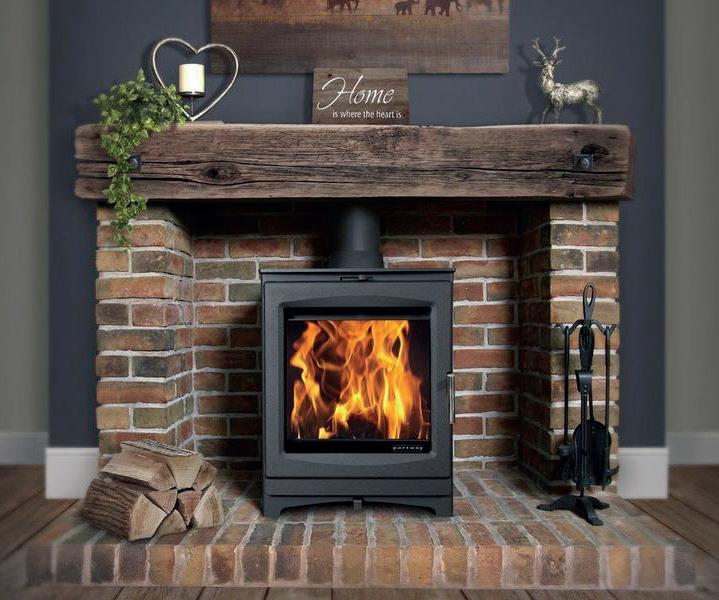
10 minute read
The Institute
The people of Deeping St James were very proud when the door of the Working Men’s Institute was opened for the first time in the spring of 1885. It had been the dream of George Henry Dean of Welland House, Clerk to the School Board which oversaw the operation of all the schools in the village.
From his viewpoint he could see the benefit of giving the working men the opportunity to become further educated; as education had not become compulsory until 1870, many older men could neither read nor write. But it was the working men of Deeping St James who had given freely of their time and skills to bring the building to life and it was they who fixed the gas light above the door engraved on which were the words The Working Men’s Institute.
Advertisement
George Dean had initially formed a Committee to kick the whole idea off with himself as Secretary, Thomas Chesterfield as Treasurer, and William Jackson, a farmer of Eastgate, and Joseph Cunnington, a distiller of Eastgate, as members. The Revd John George leant reading books and games like draughts etc.
The first meetings were held in the Church schoolroom and initially about ten men attended. Local school teachers were encouraged to come along and to help those who couldn’t read; many learnt to read in this way. By November 1881 the membership had grown to about 40 and they moved to the Boys’ School. It was clear that they needed their own space and so the fundraising began with bazaars and concerts etc. This was given a boost when on 25th December 1884 Tyghes Charity Trustees granted a 99-year lease for the land and gave permission for the Deeping St James Working Men’s Institute to be built on it!
The project was ideally a building with three good-sized rooms, one for supplying tea and coffee, one for reading and playing draughts and chess, where smoking would be allowed, and one for reading only where newspapers, periodicals and books would be supplied.
By March 1885 enough money had been raised to start building and the first cornerstones were laid at a rather grand ceremony: the first stone by Mrs Waterton of Waterton Hall, who carefully laid a time capsule containing a recent copy of the London Times and a list on parchment of those who had been involved and prepared by George Dean in the centre of the stone. There were three hearty cheers for the mason who had prepared the stone so well and three for the success of the Institute. The other corner was laid by Thomas Chesterfield and several bricks were also placed by some ladies present. There were words of encouragement from George Dean and William Jackson and Mr Waterton not only expressed his zeal for the good work of the Institute but he also placed five guineas on the collection plate handed round by Thomas Chesterfield. In addition a further £2 was collected and then money was raised for tickets to a public tea in the Boys’ School Room.
By Whit Monday 1885 the building was complete. The total cost was £137, the tradesmen of Deeping St James having given their services for free. The farmers utilised their horse and carts to collect supplies for free: if ever a building in Deeping was a labour of love, it is the Institute.
The rooms were well lit and warm and young and old could spend pleasant hours for a penny a week or five shilling honorary subscriptions. The official opening ceremony was conducted by K. Waterton Esq., the meeting after held over the road in the Boys’ School, because of bad weather and large numbers.
In November of the following year the anniversary was celebrated with a tea for members and friends; over 150 sat down. Afterwards there were speeches by committee members Mr Lenton and Mr Sutcliffe and a winter
entertainment with professional singers was announced as a way to reduce the debt on the building of £18.
It wasn’t long until vandalism struck! On 8th February 1888 the Peterborough Express reported that the lamp was taken down and smashed! There was a two guineas reward for information as to who was the offender.
The Parish Council, having been established by an Act of Parliament in 1894, lost no time in applying to use one of the lower rooms as a Parish office and Council Room, for which the Council was prepared to pay £5 per year to include lighting. A specially convened committee meeting was held with Mr Dean presiding and permission was given.
In 1900 the Working Men’s Sick and Dividing Club was established, which provided a safety net before the welfare state. Men paid in a certain amount each week and then could claim if misfortune fell. There were 40 Institute members to start with, rising to 64 by 1924, each receiving an annual dividend of 17 shillings and four pence.
Monthly lectures were arranged including wood carving etc. and in 1902 when the ceiling required work, members did it themselves rather than incur the expense. 1905 was an auspicious year, when active Deeping St James resident John Boydon joined the Committee as Treasurer and Mr S. Wright as Secretary. It was also decided to light the Institute with gas. The enthusiasm for the Institute showed no sign of abating and when in January 1907 the general meeting of members was held under the Chairmanship of George Dean there was shown to be expenditure against income of ten pounds six shillings and seven pence against eleven pounds seven shillings and one penny, leaving a healthy balance of one pound ten shillings and six pence. There was a very good attendance at the meeting and two new members were elected.
When the Tyghes Charity carried out an audit of the land that they owned, the garden at the back of the Institute was rented by James Merrillion for five shillings a year. There was a building known as the Tool House (now Riceland) rented to Bourne Rural Council for two pounds a year and the Institute standing on the garden rental, income of which was five shillings a year. At this time all Deepings Charities were to be amalgamated and registered with the Charity Commission. Representatives from the Parish Council who already administered some of the smaller charities were required and W. Smith and J. Perkins stepped forward for the role. Tyghes Charity put forward George Dean and T. Perkins as their representatives, and there was representation from Bourne Rural Council as well. So at a meeting in London Deeping St James United Charities was born.
After this membership of the Institute became more formal. A rule book was issued, there were to be no dirty boots or clothes, no alcohol, books borrowed from the Library must be signed for and kept no longer than three months. In 1909 the usual bread from the Perkins bequest was distributed.
At the annual meeting of the Working Men’s Institute in 1915 there were new elections to office, George Dean having passed away in 1912. Mr Jennings became the Chairman with Vice President, Mr Leaton, Hon Secretary and Treasurer Mr Feneley, Committee Messrs G Chesterfield, J. Crowson, A. Feneley , A. Mayes, H. Quartermaine, H. Taylor and J. Welby. The accounts now showed a deficit of five shillings and six pence. During these War years the Trustees purchased War Bonds (issued to help the Government raise money to fight the War) and they paid out in 1927.

Painted to celebrate the centenary of the Parish Council by Derek Abel in 1994 and hangs in The Institute







Family run company Free, no obligation design service Supply only or supply with installation Siemens and Neff Master Partner

43-45 Bridge Street, Deeping St James Lincolnshire PE6 8HA Tel: 01778 346415 www.devonportskitchensbathrooms.co.uk
In 1920 it was decided to form a Deeping League of Football Clubs and a plea was put out to local villages to join in. The Institute team, Deeping Athletic, were first to register along with Deeping Rovers, Langtoft, Peakirk, Thurlby, Littleworth and Baston. In 1921 Deeping Athletic, with all players being members of the Institute, won the Cup, coming top of the League with 24 points with Deeping Rovers second with 14 points. On 1st May 1921 Deeping Athletic played against the best men of all teams in the League in front of a crowd of 500. Deeping Athletic won 6-4 with Mr Otter as ref and Canon Ashby as commentator. At the end of the match Mr Izitt (Chairman of the League) introduced Mr and Mrs Porter from the Manor House, West Deeping, and Mrs Porter, with a few well-chosen words, handed the Cup to J. Crowson, Captain of Deeping Athletic, to riotous cheering from the crowd. Mr Porter handed medals to the winners, three of the team being Thomas Jibb, John Parker and William Crowson, and to the runners up. After this the two winning teams decided to amalgamate and Deeping Swifts were born.
In December 1930, with J. Waters as Secretary, Mr Lenton as Treasurer and H. Jennings as auditor, the annual share-out of the Working Men’s institute took place. Receipts totalled £119.18s and expenditure was £45. 7s 8d including £39.11s.8d paid out for sick benefits. This left a dividend of 16s.4½d per member.

During the Second World War the large upper room of the Institute became the HQ of the Lincolnshire Red Cross detachment for weekly first-aid lectures given by Dr Douglas. Later the room was used by the Priory Players as a wardrobe for their many costumes. The insurance value of the building in 1949 was £2,300. In November 1954 a request was made to Alderman C Feneley, Secretary of United Charities, by a committee of local residents to convert the Institute into a village hall. This was declined. However, in the following year a part of the Institute was converted into the Deepings and District Voluntary Laundry for the Sick and with some ceremony was opened by the Earl of Ancaster on Wednesday 4th May 1955. The Committee met quarterly with Gordon Crowson in the Chair and in May 1956 R. Cusden, a nominee of Market Deeping Parish Council, was welcomed on board. Mr Scott, who was also co-opted onto the committee at the meeting, handed over a cheque for £84 raised at a whist drive and Alderman Feneley handed over a cheque for £147, a balance of a fund of which he and Mr Towning were Trustees. Treasurer Dr Douglas showed that the Committee had a balance of £250. Thanks were extended to Mr Stephenson for providing the concrete for a new floor and Messrs A. A. Crowson for providing the labour to lay it. It was decided to put aside some money for the purchase of new sheets and a ladies sub-committee was formed to purchase them. One can only assume that over the years with the growth of the launderette and washing machines widely owned the need for the Laundry declined and it was wound up. The sign remained above the door.
In 1994 there were some serious recommendations to demolish the Institute but the cost was deemed to be exorbitant and so United Charities, now the owners of the building, decided instead to totally refurbish the building which had fallen into disrepair. Burmor builders were contracted to complete the work at a sum of £4,100, Home Choose Carpets furnished the building with Sheffield Green hard-wearing carpet at a cost of £1,313 and SJ Blinds fitted the blinds. Two smaller rooms were created upstairs and the meeting room on the ground floor was now accompanied by a fully fitted kitchen and toilets where the old Voluntary Laundry had stood, the sign for which was sadly removed at this time.



Our Showoom, is open by appointment only. To book, please call 01778 347267, text 07860 203002 or email classicfp@aol.com











